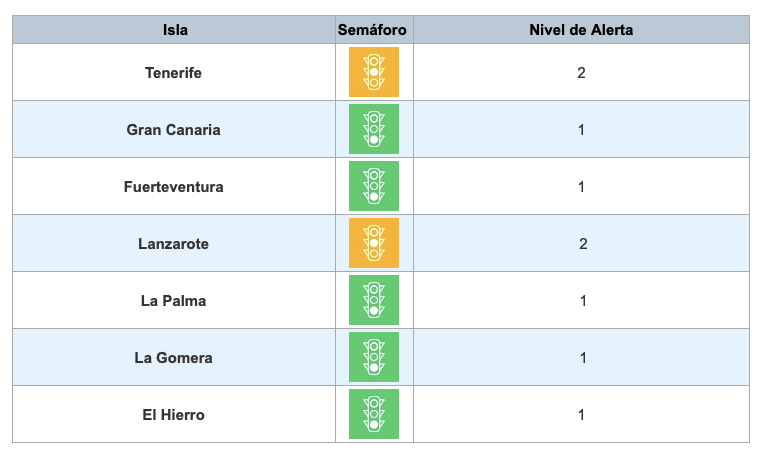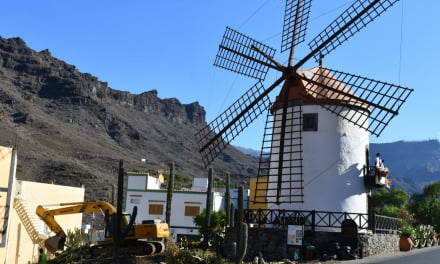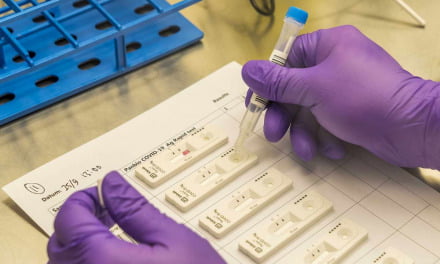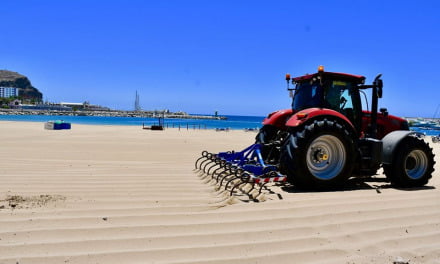The Canary Islands Ministry of Health agreed this Thursday, June 3, after analysing the latest data, to keep all of the islands at the same levels of alert. Tenerife and Lanzarote (where La Graciosa is epidemiologically included) continue at level 2 (Amber); and Gran Canaria, El Hierro, Fuerteventura, La Gomera and La Palma at level 1 (Green).
The updated assessment comes into force coinciding with the weekly update of the Accumulated Incidence Traffic lights (AI), published on the website of the Ministry of Health, based on the report issued by the General Directorate of Public Health of the Canary Islands Health Service (SCS) dated June 2.
That report, in the case of Tenerife, indicates that the 7-day Accumulated Incidence rate (AI) has been declining very discreetly since the end of April, this decrease had stagnated at values of around 51 cases per 100,000 inhabitants, however, overall the indicators point to a positive evolution, though the 7-day AI is not yet in a stable decline, it is heading towards low risk, so it is proposed that the island continue at alert level 2 for another week.
The rest of the islands also continue in the same stabilisation or downward trend, although on Lanzarote, despite the fact that the indicators show lower figures than the last evaluation, the Accumulated Incidence rate remains at an average of 81.9 cases per 100,000 inhabitants over the last week (high risk). Due to the high traceability of the cases and the incidence values having not represented a high impact on the hospital care system, nor on the elderly, it is proposed that the island remain at alert level 2 and monitored closely overthe next few days.
Canary Islands at alert level 1
The Autonomous Community as a whole report that indicators point to an increasingly positive evolution. Although the 7-day Accumulated Incidence is still at medium risk, the impact on those older than 65 is currently at a low risk level and the rest of the complementary indicators for transmission and those for the healthcare services are at low or minimal risk. Therefore, it is proposed that that the whole region generally continue at alert level 1.










